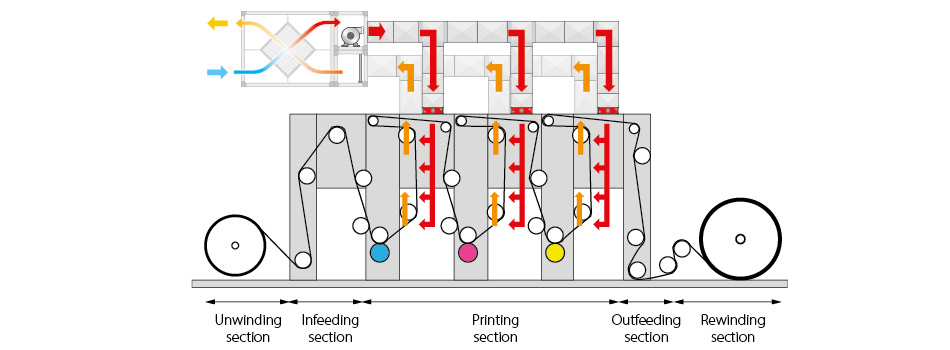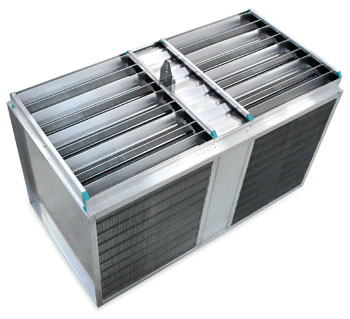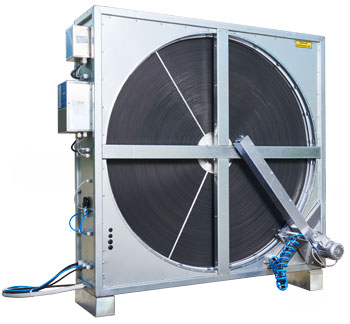Energy-efficient printing systems with heat recovery
Many printing and surface finishing technologies for paper and textiles include an oven drying phase after the deposition of ink, adhesive, or other protective material. This phase involves a high energy expenditure, but is crucial for the success of the product.

In flexographic and gravure printing processes, ink is deposited on the paper by passing through several rollers in sequence. If the colour between one roller and the next does not dry properly, the printing cylinders get dirty causing inaccurate and low quality images (doubling).
Other processes, such as siliconization for self-adhesive labels and multilayer laminating for flexible packaging and industrial products, require drying with large amounts of hot air, with temperatures usually between 70 and 250°C, resulting in high energy expenditure.
Heat recovery reduces the energy consumption required for drying by 90 % by transferring heat from the solvent-laden exhaust air stream to the incoming clean air stream.

Simplified layout of a rotogravure printer with a heat exchanger serving three independent drying sections.
Heat recovery units resistant to high temperatures and mechanical stress are essential for this application. The companies Recuperator and Klingenburg, part of the CAREL Group, are presenting their technological know-how in the service of printing and surface finishing processes at Drupa.
 Plate heat exchangers with aluminium or stainless steel fins allow compact installation in the ventilation ducts of the drying section and guarantee resistance to high temperatures and corrosion due to the presence of solvents.
Plate heat exchangers with aluminium or stainless steel fins allow compact installation in the ventilation ducts of the drying section and guarantee resistance to high temperatures and corrosion due to the presence of solvents.
In addition, thanks to the integrated by-pass and regulating damper systems, the heat exchanger allows recovery with variable recycle rates for each section of the printing tunnel, optimising energy consumption.
 High-temperature-resistant rotary heat recovery units, equipped with automatic cleaning systems that effectively remove dust, ink particles and sticky substances, enable heat recovery at very high efficiencies. Ideal for retrofitting existing systems, they allow rapid integration into existing ducts. Their resistance to high temperatures also makes them ideal for downstream post-combustion heat recovery.
High-temperature-resistant rotary heat recovery units, equipped with automatic cleaning systems that effectively remove dust, ink particles and sticky substances, enable heat recovery at very high efficiencies. Ideal for retrofitting existing systems, they allow rapid integration into existing ducts. Their resistance to high temperatures also makes them ideal for downstream post-combustion heat recovery.
